Inflammation of the piriformis muscle is a neurological disease. The main symptom of pathology is acute pain syndrome. Inflammation provokes infringement of the sciatic nerve trunk and nearby blood vessels.
There is not only a spasm, but also a modification of the morphology of muscle fibers. Diagnosis and treatment are prescribed by a neurologist. Timely therapy at an early stage will avoid negative consequences.
Record content:
- 1 Causes of the syndrome
- 2 The main signs
- 3 Diagnostics
-
4 Drug treatment methods
- 4.1 Rubbing against inflammation
- 4.2 Compresses
- 4.3 For oral administration
- 5 Physiotherapy
- 6 Manual therapy
- 7 Massage and self-massage
- 8 Reflexology
- 9 Physiotherapy
- 10 Folk remedies
- 11 Video about the treatment of the piriformis muscle
Causes of the syndrome
There are many external and internal factors that contribute to the appearance of an inflammatory focus:
| Name | Description |
| External causes |
|
| Internal factors |
|
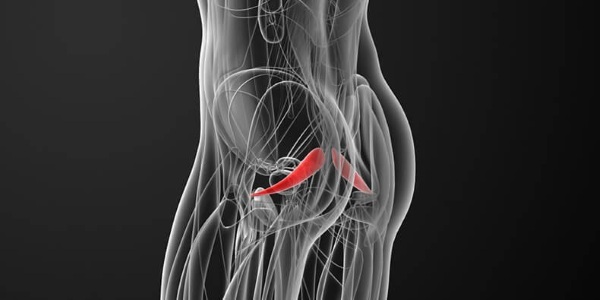
A neurologist will help to establish an accurate diagnosis and determine the cause of the disease. It is important to go to the hospital in a timely manner and be examined.
The main signs
Clinical signs with the appearance of pathological processes in the area of the piriformis muscle will help a specialist pre-establish a diagnosis and prescribe the patient the most informative examination. According to the complaints present in a person, the neuropathologist will determine the area of the pathological focus and the depth of the muscle damage.
Inflammation of the piriformis muscle (symptoms and treatment require full diagnosis) provokes the following manifestations in a person:
| Name | Clinical picture |
| Local |
|
| Signs of compression of the sciatic nerve |
|
| Vascular manifestations |
|
If any clinical signs appear, it is important to go to the hospital right away. Progressive inflammation of the piriformis muscle will lead to unpleasant consequences. Timely therapy will avoid complications.
Diagnostics
Comprehensive diagnostics for inflammation of the piriformis muscle is carried out in order to determine the source of the pathology in order to choose the most effective treatment and eliminate it. The examination will also make it possible to differentiate the disease, since many pathologies are accompanied by a similar clinical picture.
Inflammation of the piriformis muscle (symptoms and treatment require qualified medical attention) and the following measures will help determine its cause:
| Name | Description |
| X-ray | The lumbosacral spine is examined. |
| Computed tomography (CT) | Informative diagnostic methods, thanks to which specialists determine with high accuracy the area of localization of the pathological focus (neoplasms, injuries and other diseases).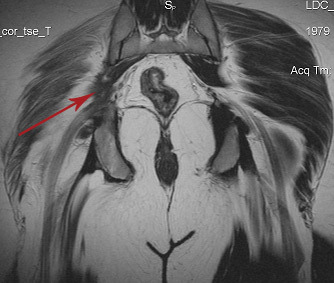
|
| Magnetic resonance imaging (MRI) |
An external examination and examination by a neurologist for a diagnosis is carried out by the following methods:
- The piriformis muscle is felt under the buttock.
- Beating the buttocks is performed to determine the direction of the pain syndrome.
- The doctor also probes the area where the piriformis muscle connects to the sacroiliac joint.
- The patient needs to lie on a healthy side and raise the knee. Discomfort in this position indicates a spasm of the piriformis muscle.
- The patient leans forward without bending the knees. The doctor probes the buttock and the area of the piriformis muscle, the sciatic nerve, to establish a preliminary diagnosis.
To identify the inflammatory process, the patient is given a novocaine blockade. The medicine is injected deep into the muscle fibers. A clinical spasm is detected if a person feels better after the injection. In some situations, based on the results obtained, the patient is sent to consult with other specialized doctors (oncologist, orthopedist, vertebrologist, gynecologist, urologist).
Drug treatment methods
Inflammation of the piriformis muscle requires complex therapy. Patients are selected drugs that are taken orally and used externally. It is important to strictly adhere to medical recommendations and dosages, since medications provoke side effects. In severe or emergency situations, surgery is performed.
Rubbing against inflammation
For local use in patients in the complex therapy of the affected piriformis muscle prescribe pain relievers and anti-inflammatory ointments:
| Name | Application | Contraindications |
| Nurofen | The drug is applied to the skin in the affected area, 50-125 mg 4 times a day. It is recommended to rub the gel with light massage movements until it is completely absorbed. The time minimum interval between the application of the drug should not be less than 4 hours. The course of treatment lasts 2 weeks. |
|
| Dolobene | The medicine is applied to the affected area 3 cm 3-4 times a day and distributed with light massage movements. |
|

The advantage of local therapy is the local effect on the area of development of the inflammatory focus. At the same time, the active substances of drugs are absorbed into the blood in minimal quantities.
Compresses
Inflammation of the piriformis muscle (symptoms and treatment require a complete diagnosis for an accurate diagnosis) in complex therapy will help eliminate lotions. It is preferable to use a steroid anesthetic medicine - Dimexide.
Compresses with it are done 2-3 times a day for 30 minutes. The concentrated solution is diluted with water in certain proportions. Moisten gauze or bandage with the resulting product, apply to a sore spot in the gluteal-sacral zone.
For oral administration
The neuropathologist selects medications for oral administration for patients, guided by the results of a comprehensive examination. Considering also the condition of a person and the individual characteristics of his body.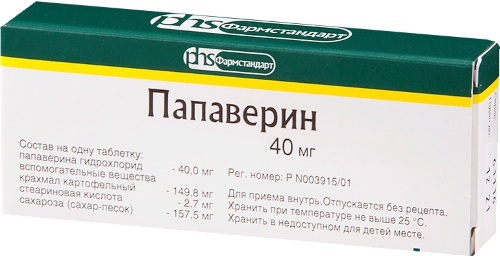
| Drug group | Name | Application |
| Antispasmodics | No-Shpa, Papaverine | Medicines reduce spasms and prevent recurrent attacks of pain. The tablets should be taken orally whole, washed down with a small amount of liquid. The adult dosage is 0.04-0.08 g 2-3 times a day. In severe or urgent cases, the medicine is administered intramuscularly or intravenously. |
| Anti-inflammatory nonsteroidal drugs | Diclofenac, Meloxicam | The drugs stop the inflammatory process, prevent its spread to nearby tissues and reduce painful sensations. The drug is administered intramuscularly at 75 mg 1-2 times a day. The treatment lasts 4-5 days. |
| Pain medications | Tempalgin, Baralgin | The tablets should be taken orally with food or after a meal, with a little water. Adult patients are prescribed 1 tablet 1-3 times a day. |
| Muscle relaxants | Mydocalm, Baclofen | Adult patients are prescribed 150-450 mg of medication per day. The dosage is recommended to be divided into 3 doses. The tablets are taken with meals. The medicine in difficult situations is administered intramuscularly or intravenously through a dropper. |
| Glucocorticosteroid drugs | Diprospan, Euphyllin | The drug is administered intramuscularly in a dose of 1-2 ml. |
| Vascular drugs | Trental, Actovegin | The dosage of the drug is selected individually in each case. Typically, adults are prescribed 2-4 tablets 2-3 times a day. The medicine is swallowed whole, not chewed and washed down with a sufficient amount of water. The tablets should be taken after meals. |
| Vitamins of group B | Neurorubin, Milgamma | Medicines are taken before meals or after eating. Swallow the tablets whole with a little water. Adults are prescribed 1-2 tablets per day. The course of treatment lasts 4 weeks. |
| Chondroprotectors | Teraflex, Artra | Medicines are prescribed for prophylactic purposes to prevent irreversible complications in the joint area. Adults are prescribed 1 capsule 2 times a day. The course of treatment lasts at least 3 weeks. |
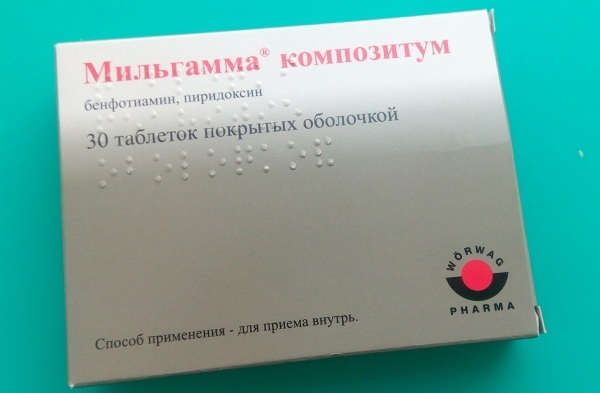
Correctly selected treatment will help reduce spasms and restore a person's normal lifestyle, as well as prevent the occurrence of serious complications. Eliminate spastic syndromes, if drugs do not help, drug blockades allow.
Physiotherapy
Therapeutic gymnastics is a mandatory and daily method of therapy for lesions of the piriformis muscle. Specially selected exercises will help to relax damaged muscles and nearby areas. After performing therapeutic exercises, blood circulation will improve.
Classes are recommended to be done under the supervision of a qualified professional and preferably, adhering to a certain sequence:
- Lie on your back, bend your legs at the knees. Push one knee to the side with maximum effort.
- Lie on your back, press your shoulders to the floor. Straighten one leg. Bend the second in the knee area. With the palm of your straight leg, press your knee to the floor. Stay in this position for 30 seconds, then return to the starting position. Exercise with the other leg.
- Take a horizontal position lying on your back. Bend both legs at the knee and raise them. Exercise will help stretch the piriformis muscle. Throw the diseased leg over the healthy one. Grasp the thigh with both hands and pull it towards you.
- Sit on a chair. Spread your legs wide, connect your knees. Lean on one hand from the back. Pull the other upper limb forward. In this position, you need to slowly get up until your knees open.
Physiotherapy exercises are recommended to be performed 3 times every day. After the first course of training, the patient will feel relief. Burning sensation, discomfort and pain will decrease.
Manual therapy
Treatment of inflammation with lesions of the piriformis muscle is carried out by complex methods, among which manual therapy is successfully used. Sessions are necessarily conducted by an experienced specialist - an osteopathic doctor.
Manual therapy helps to reduce the symptoms of pathological processes, including severe pain. Unblock the pinched sciatic nerve and restore the motor functions of the affected lower limb.
Massage and self-massage
In the early stages of the development of the inflammatory process in the area of the piriformis muscle, patients are advised to attend massage procedures. The sessions are conducted by a qualified professional. First, the paravertebral region is kneaded, then the lumbosacral zone. The buttock from the sore side and the back of the leg are also captured.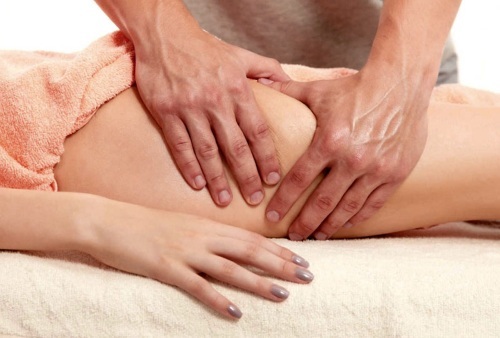
The course of treatment of the piriformis muscle includes 12 massage procedures. Each session lasts 15-20 minutes. Then you need to take a break for a month and continue treatment.
For self-massage, it is recommended to use a special Kuznetsov applicator. It improves blood circulation in the affected area, quickly eliminates painful sensations and discomfort, and also prevents the appearance of exacerbations against the background of the inflammatory process.
Therapeutic self-massage session can be performed using a tennis ball. Place it under the sore area and ride it, pushing off with your hands and feet. Exercises to perform without effort and heavy loads, at a slow pace. It is recommended to practice every day for 4 hours. If you experience severe painful sensations, give up self-massage and go to the hospital to see a doctor.
Reflexology
With inflammation of the piriformis muscle, patients are also shown reflexology. Treatment is selected in each case individually, taking into account the diagnosis, examination results and individual characteristics of the organism.
Reflexology is carried out by the following methods:
- blockade setting;
- massage of active points on the patient's body;
- warming up;
- laser exposure;
- massage of certain points in the area of the auricles.
A specially selected method of reflexology will reduce pain syndrome, prolong the period of remission, and improve the functioning of cells in the area of muscle damage. It activates the blood circulation process and enhances the conductivity of neurons.
Physiotherapy
Inflammation of the piriformis muscle (symptoms and treatment can be determined by a neuropathologist after a full examination) is successfully eliminated in combination with physiotherapy procedures. They help relieve muscle spasms and pain.
Patients are assigned the following physiotherapy sessions:

- warming up the affected area with ultra-high-frequency rays;
- ultrasonic exposure;
- drug electrophoresis;
- amplipulse;
- dynamic currents;
- phonophoresis;
- vacuum massage;
- paraffin applications;
- treatment with low-frequency currents;
- laser treatment.
The most positive results can be achieved if physiotherapy is carried out in combination with traditional therapy.
After each session, the pain syndrome, the inflammatory process gradually decreases. Blood circulation improves, regeneration of damaged tissues is activated. Independently at home, you can use a medicinal product - Vitafon.
Folk remedies
Unconventional methods can be used for inflammation of the piriformis muscle as an aid to reduce painful sensations and other symptoms of a pathological condition. Prescriptions should be selected with a neurologist. Many of the natural ingredients used can provoke an allergic reaction or individual sensitivity.
Effective folk remedies:
| Name | Recipe | Application |
| Compress, rubbing | Mix in equal proportions valerian, triple cologne, hot pepper and hawthorn. Add 10 aspirin tablets, pre-grind. The resulting mixture must be mixed well and left in a dark place for 7 days. | The finished medicine is recommended to be used for compresses and rubbing the damaged area with inflammation of the piriformis muscle. |
| Healing mixture | Grind the horseradish root and black radish with a blender. Mix the resulting gruel with salt (1 tbsp. l.) and acetic acid (1 tbsp. l.). Mix all components until smooth and leave for 7 days in a dark place, shake occasionally. | The resulting mass should be used for compresses. Apply the gruel to the gauze tissue and apply to the area on the leg where the piriformis muscle is located. The compress is left for a maximum of 15 minutes, then everything is removed. |
| Healing broth | Combine the flowers of medicinal calendula, thyme and raspberry in equal proportions. Mix all components well and pour 2 tbsp. l. hot water. Insist for 40-60 minutes and drain. | Ready-made flower broth is recommended to be consumed inside 1/3 tbsp. before eating. The course of treatment lasts 10-14 days. |
Healing tea based on chamomile flowers, calendula and calamus root will also help to cope with the inflammatory process in the area of the piriformis muscle. All components are mixed in equal parts, brewed with boiling water. Insist, filter and drink during the day instead of tea. The broth is recommended to be consumed regularly throughout the month.
Inflammation of the piriformis muscle is a neurological disease that brings significant discomfort to a person and disrupts his usual life. Symptoms of pathology cannot be ignored, since in the absence of timely treatment, the risk of serious complications, up to disability, increases.
Video about the treatment of the piriformis muscle
Best Piriformis Exercise:




